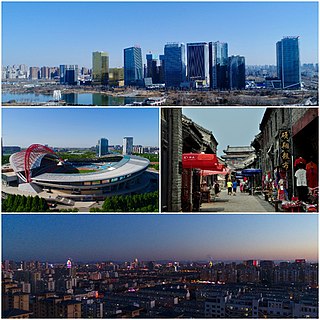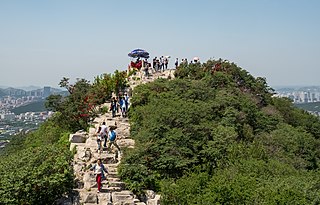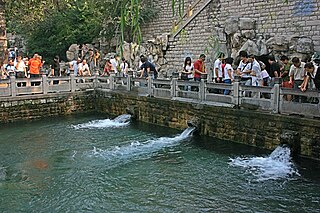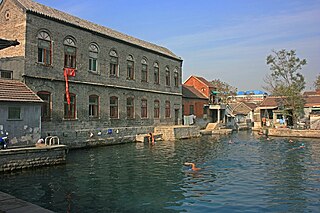
Shandong is a coastal province in East China. Shandong has played a major role in Chinese history since the beginning of Chinese civilization along the lower reaches of the Yellow River. It has served as a pivotal cultural and religious center for Taoism,Chinese Buddhism and Confucianism. Shandong's Mount Tai is the most revered mountain of Taoism and a site with one of the longest histories of continuous religious worship in the world. The Buddhist temples in the mountains south of the provincial capital of Jinan were once among the foremost Buddhist sites in China. The city of Qufu was the birthplace of Confucius,and later became the center of Confucianism.

Jinan is the capital of Shandong province in Eastern China. With a population of 9.2 million,it is one of the largest cities in Shandong in terms of population. The area of present-day Jinan has played an important role in the history of the region from the earliest beginnings of civilization and has evolved into a major national administrative,economic,and transportation hub. The city has held sub-provincial administrative status since 1994. Jinan is often called the "City of Springs" for its famous 72 artesian springs.

Zibo is a prefecture-level city in central Shandong province,China. It borders the provincial capital Jinan to the west,Tai'an to the southwest,Linyi to the south,Weifang to the east,Dongying to the northeast,and Binzhou to the north.

The Thousand Buddha Mountain is a hill located about 2.5 kilometers southeast of the city of Jinan,the capital of Shandong Province,China. It covers 1.518 square kilometers and has a peak of 285 meters (935 ft) above sea level. It is renowned for its numerous Buddha images which have been carved out of the hill's rock faces or free-standing structures erect since the times of the Sui dynasty (581–618) and its Xingguochan Temple. It is considered one of the "Three Greatest Attractions in Jinan" together with Baotu Spring and Daming Lake. It is also one of the 4A-rated Tourist attractions in China. Thousand Buddha Mountain is opened up as a public park in 1959,rated as AAAA-rated Tourist Attractions of China in 2005,and rated as National Park of China in March 2017.

The Jinan Military Region was a PLA Military Region located in the east of the People's Republic of China,covering the Shandong and Henan Provinces,which also formed military districts. It appears that Yang Dezhi was one of the first commander of the Jinan MR,from 1958. It was considered a strategic reserve. It included some of the area previously within the Wuhan Military Region,which was disbanded in 1985–88.

Daming Lake (Chinese:大明湖;pinyin:Dàmíng Hú;Wade–Giles:Ta4-ming2 Hu2;lit. 'Lake of the Great Splendour') is the largest lake in the city of Jinan,Shandong,China and one of city's main natural and cultural landmarks. Located to the north of the historical city center,the lake is fed by the artesian karst springs of the area and hence retains a fairly constant water level through the entire year.

The Thousand-Buddha Cliff is a historical site of mostly Tang dynasty rock carvings in central Shandong Province,China. Along a cliff face of 63 meters length,over 210 statues and 43 inscriptions have been reported. Most of the statues were carved during 618–684.

Shenyang Dongjin Football Club was a Chinese football club based in Shenyang,Liaoning and their home stadium is the Shenyang Urban Construction University Stadium that has a seating capacity of 12,000.
Li Ming is a Chinese football coach and a former international player.

Lingyan Temple is a Buddhist temple located in Changqing District,Jinan,Shandong Province,China,about 20 kilometres (12 mi) north of the city of Tai'an. The temple grounds are situated in a valley on the western edge of the Taishan range. The Lingyan Temple has a long recorded history,and was one of the main temples in China during the times of the Tang and Song Dynasties. Its most renowned landmarks are the 11th century Pìzhī-tǎ and the Qiānfó-diàn which houses a Ming dynasty bronze Buddha statue as well as 40 painted clay statues of life-size luohan from the Song dynasty.

The Shandong Museum is the principal museum of Shandong Province. It is located in the City of Jinan,Shandong,China. It is one of the largest museums in the country.

The Baotu Spring is a culturally significant artesian karst spring located in the city of Jinan,Shandong,China. It is mentioned in the Spring and Autumn Annals,one of the Five Classics of Chinese literature,and was declared the "Number One Spring under the Heaven" by the Qianlong Emperor in the Qing dynasty.

Hua Hill (Shandong) (simplified Chinese:华山;traditional Chinese:華山;pinyin:HuàShān) is a solitary cone-shaped hill in the lower Yellow River valley,located at the northeastern edge of the city of Jinan,Shandong Province,China. The hill is known for its cultural and historical significance as well as for its natural environment. It has been an inspiration for Chinese artists for many centuries and was the site of the Battle of An,a major battle fought during the Spring and Autumn period.

The Black Tiger Spring is a culturally significant artesian karst spring located in the city of Jinan,Shandong Province,China. The spring is ranked as the second most significant among the 72 named springs in Jinan. The water of the spring stems from moderately-deep circulation and emerges from a water-filled limestone cave in a steep cliff. From the mouth of the cave,the water is funneled to flow out of the mouths of three ornamental stone-carved tiger heads into a square-shaped spring pool. From there it runs into the old city moat,next to which the spring is located. According to the tradition,there was a black rock lying in front of the cave in ancient times. The name of the spring is said to be derived from the shape and color of the rock,which resembled a black tiger,and the sound of the water gushing past the rock being reminiscent of the roar of a tiger. The ancient layout of the spring is described in a poem by the Ming Dynasty poet,Yan Bizeng.

The Zhuoying Spring is a culturally significant artesian karst spring located in historical center of the city of Jinan,Shandong Province,China. It is listed among the 72 famous springs (Chinese:七十二名泉;pinyin:Qīshí'èr Míng Quán) of Jinan. The spring forms a large spring pool,the Palace Pool,that is used as a public outdoor swimming pool.

The Jinan Great Southern Mosque is the oldest mosque in the city of Jinan,Shandong Province,China. It was established during the Yuan dynasty. Most of the present structures were erected during the Ming dynasty. The basic layout of the mosque is that of a Chinese temple into which the elements needed for its function as a mosque have been integrated.
The Ming Hu Ju is a theater that features primarily traditional performing arts from Shandong. It is located on the southern shore of the Daming Lake and to the north of the historical center of the city of Jinan,Shandong,China. The theater has been in operation since the late Qing dynasty. It was established in 1890 and its founding is attributed to the local artist Guo Dani (郭大妮). Besides the theater proper,the Ming Hu Ju also functions as a tea house and a restaurant. The Ming Hu Ju is featured as a setting in the novel The Travels of Lao Can by Liu E.

Xingguo Temple is a Buddhist temple located in Zhangqiu District of Jinan,Shandong.
Jinan Commandery was a commandery in historical China,located in what is now central Shandong province.
















